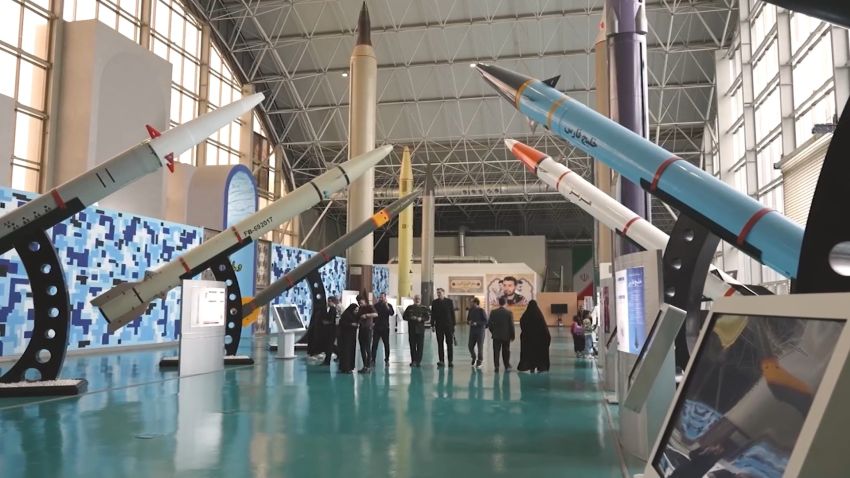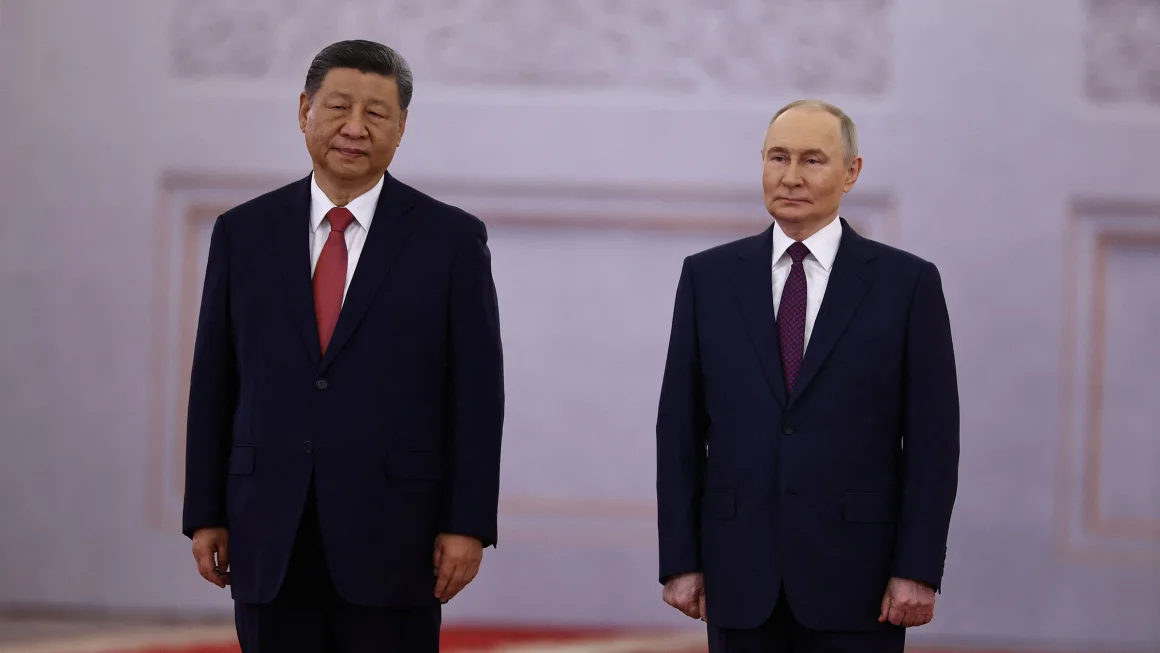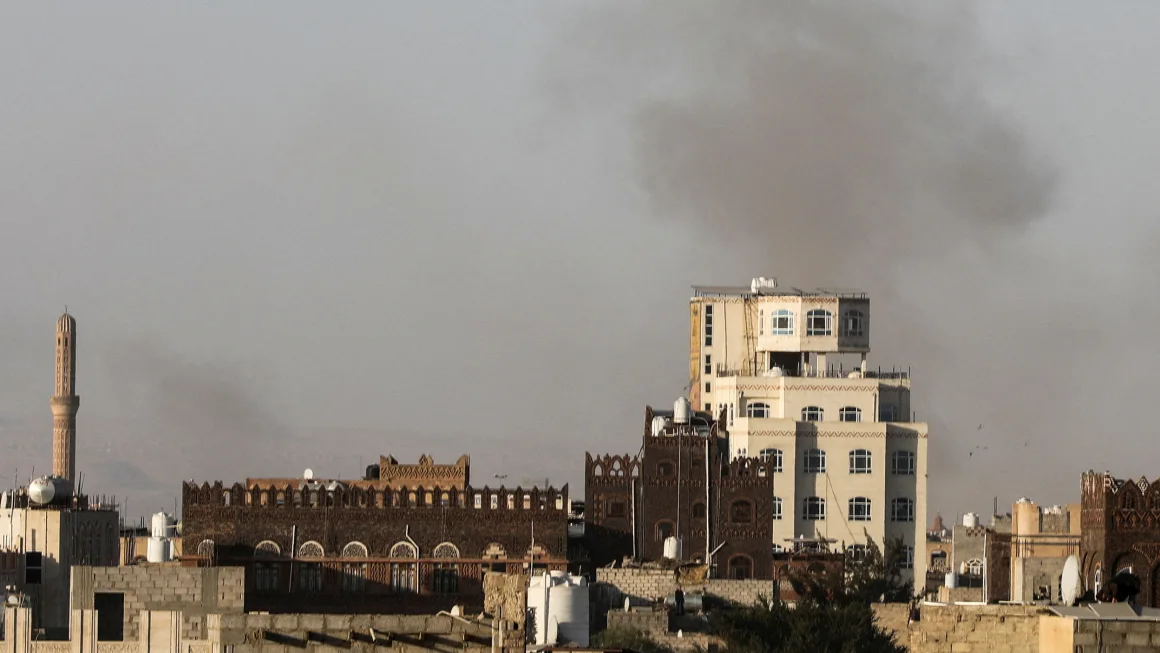CNN gets a rare look at the Iranian missiles and drones that hit Israel

Editor’s Note: A version of this story appears in CNN’s Meanwhile in the Middle East newsletter, a three-times-a-week look inside the region’s biggest stories. Sign up here.
“You have to ask the Israelis,” Iran’s Islamic Revolutionary Guard Brigadier General Ali Belali says with a smirk when asked how many ballistic missiles the Islamic Republic fired towards Israel in its April 14 strike.
But he’s more than happy to show the missiles and drones Iran used in its first ever attack against Israel launched directly from Iranian soil.
“It was a punitive measure,” Belali says, as he uses a laser pointer to indicate the missiles deployed, towering above him in the exhibit.
Two weeks after the Middle East came to the brink of an all-out war, with Iran firing hundreds of projectiles toward Israel in retaliation for a suspected Israeli airstrike on an Iranian embassy compound in Damascus, Tehran is keen to show the world that it is capable of fighting a wider conflict should it be faced with one.
On April 19, Israel responded with a suspected attack inside Iran’s borders. Both the Iranian and Israeli actions resulted in minimal damage and appeared by both sides to be aimed at restoring deterrence. That situation de-escalated, but the threat of war continues to loom large over the region as Israel’s offensive in Gaza grinds on.
CNN was given rare access to an Islamic Revolutionary Guards exhibit that showcases Tehran’s air and space capabilities, including the types of weapons that were used against Israel last month. American media had never been allowed inside until now.
At the permanent exhibit of the Revolutionary Guard Aerospace Forces in western Tehran, dozens of long- and medium-range ballistic missiles stand tall along with cruise missiles and drones. The exhibit is meant to show the development and progress of Iran’s drone and missile program.
“Today, our drones and missiles have become an important factor of strength and the execution of power in the world,” Belali, himself a former missile commander during the eight-year Iran-Iraq war that ended in 1988, tells CNN. He says Iran’s massive drone and missile barrage against Israel was a major success.
Iran’s attack on Israel included drones, ballistic missiles and cruise missiles. The night sky over Israeli cities lit up as the country’s air defenses worked to intercept the projectiles. Meanwhile, the air forces of Israel, the US, the UK, France and Jordan were busy in the skies, also trying to take down as many Iranian drones and missiles as possible.
“NATO, The United States and Arab countries of the region wanted to create barriers for our drones, missiles and cruise missiles, but they failed,” Belali says. “The world was not able to stop us.”

The Israeli military said that “99%” of projectiles fired by Iran were intercepted by Israel and its partners, with only “a small number” of ballistic missiles reaching the country.
The Iranians claim they managed to hit two locations inside Israel, including the Nevatim airbase in the Negev desert. Israel Defense Forces (IDF) spokesperson Daniel Hagari said that ballistic missiles that reached Israel fell on the airbase and caused only light structural damage.
“Accurate, (to) less than five meters,” Brigadier General Ali Belali claims, standing in front of two of the ballistic missiles he says were involved in the strikes against Israel, the Ghadr and the Emad. The missiles have a range of more than 1,000 miles and can carry warheads between 450 and 500 kilograms (1,102 lbs), he says. Another missile, called Kheybar, which he says was also used, carries a warhead of about 320 kilograms, the general adds.
Region’s largest ballistic missile force
Iran’s ballistic missiles have long been a cause for concern for the US and its allies in the Middle East, who have called for curbs on the missile program to be part of any deal that Washington strikes with Tehran.
The US says Iran has the largest ballistic missile force in the Middle East and considers its missile arsenal as one of its “primary tools of coercion and force projection.”
Iran has in the past insisted that its missile program is solely for defensive purposes.

In recent years, and until its attack on Israel, Iran had carried out at least five major cross-border ballistic missile strikes in the region, John Krzyzaniak, a research associate at the Wisconsin Project on Nuclear Arms Control in Washington, DC, told CNN earlier. Those include two attacks on ISIS in Syria, and three in Iraq claiming to have targeted US forces, Kurdish militants and Israeli intelligence.
Also on display at the Tehran exhibit is what Iran says is an American RQ-170 Sentinel drone, made by Lockheed Martin, that it claims to have downed in 2011. US officials told CNN that year that the drone was part of a CIA reconnaissance mission that involved both the intelligence community and military personnel stationed in Afghanistan. Three years later, Iran said it had managed to copy the drone.
Belali says Iran’s missile development is key to the Islamic Republic’s defense strategy. “In our defense capabilities we don’t rely on anyone. We have had good progress in this field and we will progress more. There are achievements that have not yet been talked about.”
Drones are equally as important for Iran’s Islamic Revolutionary Guards. The exhibit shows various stages of their drone development, starting from small wooden UAVs used in the Iran-Iraq war, all the way to models the Iranians claim have stealth capabilities.
One the most prominent is the Shahed 136, a cheap “fire and forget” drone, meaning a flight path is programmed, the UAV is launched, and it then independently flies towards the target area.
While the Iranians acknowledge using dozens of Shahed 136 drones to target Israel, both the US and Ukraine also accuse Tehran of giving hundreds to Russia, with Moscow using them to hit Ukrainian cities and energy infrastructure. The Iranians have consistently denied those claims.
The Shaheds fly low and slow and usually attack in swarms, the general says, standing in front of an unmarked truck that serves as a secretive launching platform.
“Everything is preprogrammed. The flight route is chosen according (to) the enemy’s capabilities and blind spots of radars and all the elements that can help us reach the target.”
The post CNN gets a rare look at the Iranian missiles and drones that hit Israel appeared first on Egypt Independent.
What's Your Reaction?
 Like
0
Like
0
 Dislike
0
Dislike
0
 Love
0
Love
0
 Funny
0
Funny
0
 Angry
0
Angry
0
 Sad
0
Sad
0
 Wow
0
Wow
0



















































